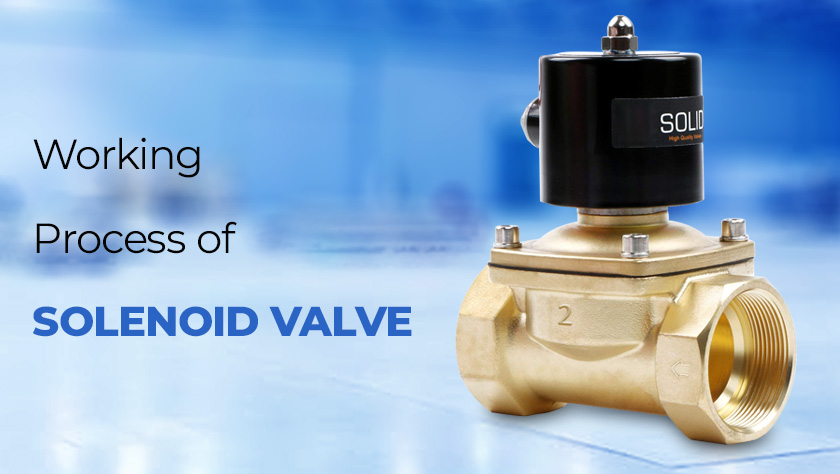A solenoid valve is an electro-mechanical valve that can be used to control the flow of liquid or gas. The main components of the solenoid valves consist of a valve stem, valve disc, valve body, valve boot, valve seat, stop washer, centring washer, plunger, coil, and a cover nut. It is commonly used in hydraulics & pneumatics to shift two way and 3-way directional control valves and some pressure control valves. The basic function of the solenoid valve is to shut off, distribute, and release fluid.
Working process of the solenoid valves
The main functional components of solenoid valves are the coil, plunger, and sleeve assembly. When the orifice in the solenoid valve is open, then it allows the flow of fluid. However when it is closed, then it prevents the flow through the valve. To open the orifice of a solenoid valve plunger is used, which raises or lowers within the sleeve tube by energizing the coil. Once the solenoid coil is energized, the resultant magnetic field raises the plunger, enabling the flow. When the solenoid coil is energized in a normally open valve, the plunger seals off the orifice, which in turn prevents flow.
Application of Solenoid valves
- Hydraulic action:- Solenoid valves are designed specifically for controlling hydraulic operations effectively.
- Controlling air pressure:- Solenoid valves are used for mixing and distributing the air effectively and hence, effectively control the air pressure.
- Treatment of water:- As it can purify the smallest particles and dust, they can be used effectively in the RO purifier as well.
- Fuel supply: – A solenoid valve is used in fuel valves to control the oil in vehicles. Highly efficient solenoid valves are leak-proof and can control the flow of oil effectively.
- Blood analysis instrument:- Solenoid valves are also used in blood analysis instruments. These instruments need to control the flow of the blood properly, and solenoid valves are designed specifically for this purpose.
- Machines and plant engineering:- Solenoid valves are commonly employed in manufacturing companies or oil refineries. They are often used to control the temperature of heater or furnace, firing systems, etc.
Highly Durable and Reliable Solenoid Valves
Features of Solenoid valves
It consists of a movable armature made of an iron alloy and attached to the valve needle, all sealed into the valve body. The coil is wound around the valve housing that contains the armature. The solenoid valve can be activated by a thermostat as well. Sare used to control the temperature of a refrigerator or a room.
- Full interchangeability of solenoid from AC to DC.
- Valves with Zero leaks.
- Valves with more than 20 million cycles.
- Clear flow paths give high Kv/Cv ratings.
- High efficient solenoid valves require less power to operate.
Benefits of using Solenoid valves
- Solenoid valve has high flexibility due to modular design
- With SKG you have a wide range of solenoid valves to choose
- Our solenoid valve has high reliability and a long service life.
- Solenoid valve has a low environmental impact.
Any requirement for the solenoid valve, feel free to contact us. We as SKG Pneumatics – distributor and suppliers of industrial valves provide a wide range of valves and fire fighting equipment from the best makers of the industry.










 FSC
FSC